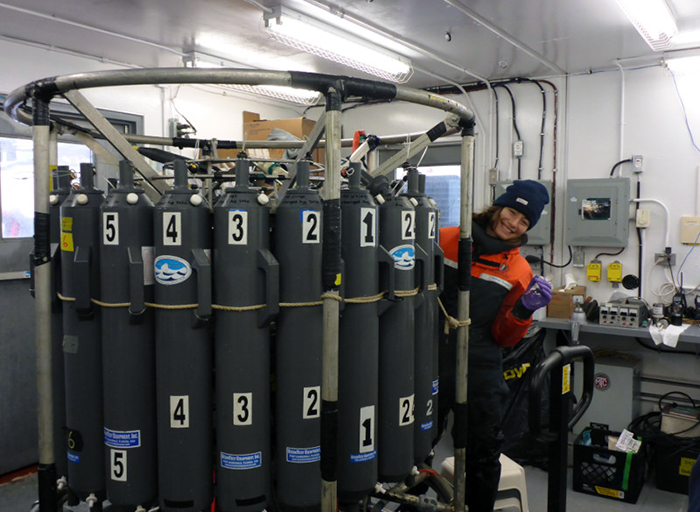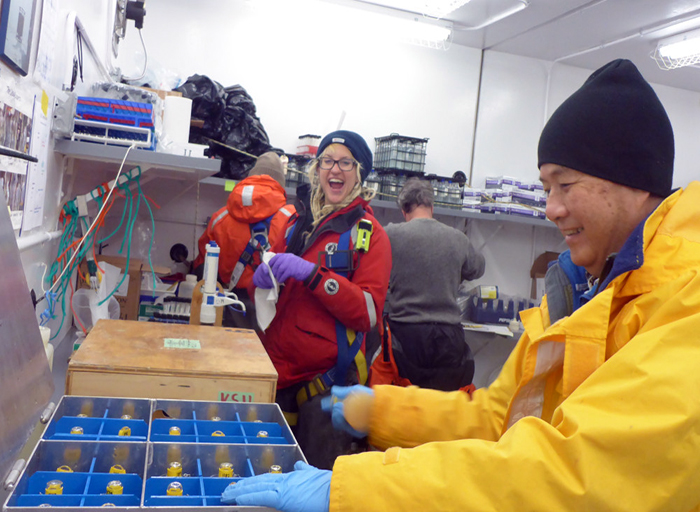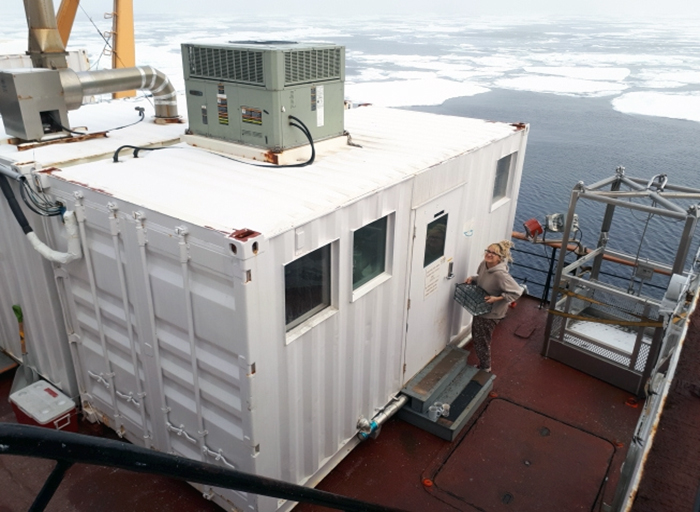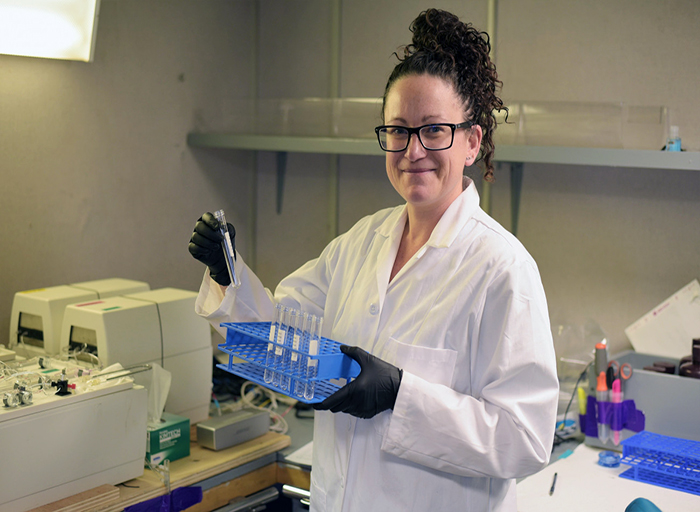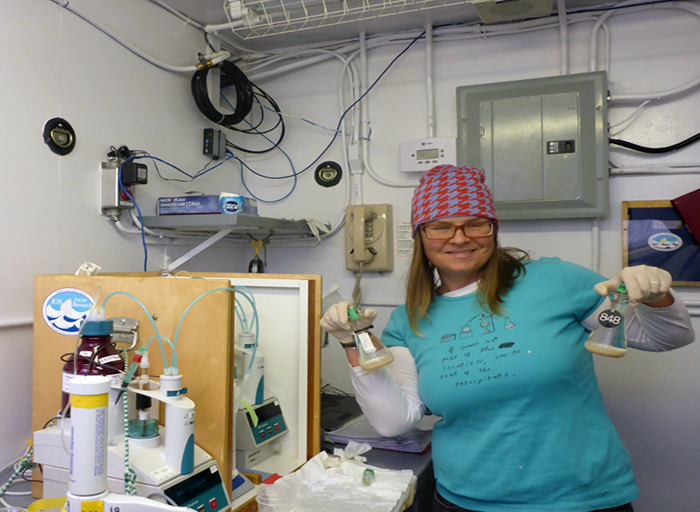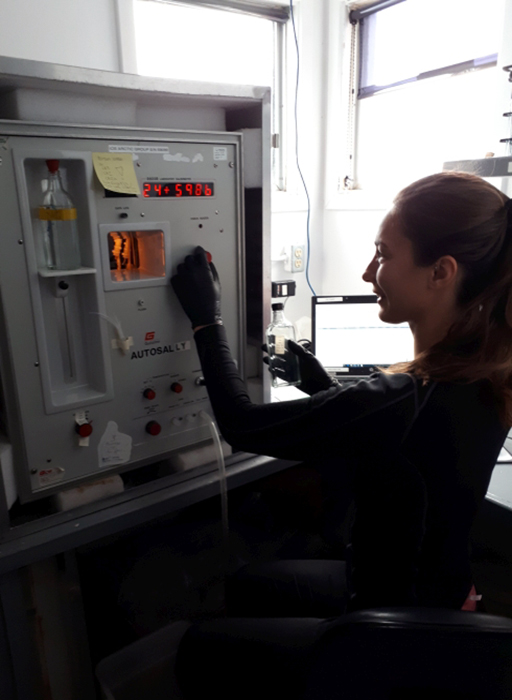Dispatch 17: Labs at Sea
Birgit Rogalla & Sarah Zimmermann
September 23, 2010
So, what samples do we collect from Rosie, our Niskin bottle carrying steed? As the rosette is brought back up to the surface, bottles are closed at specific depths, capturing the water from that spot. With these samples, we look at the water properties to better understand topics such as circulation patterns, nutrient content, carbon cycling and ocean acidification.
When the rosette is back on board and safely in its shack, the samplers descend like orcas on a seal. Bottles are sampled in order of priority, with the most vulnerable samples collected first: dissolved gases. These gases, Dissolved Oxygen and Dissolved Inorganic Carbon, are present all around us in the atmosphere, so it's important to minimize the waters' contact with air at the surface; our main enemy are bubbles! Next up are the biological samples: bacteria and dissolved organic matter, nutrients, and chlorophyll. These are slightly less sensitive, but still require special treatment to stall any biological processes. Last but certainly not least, we collect samples for the salinity (to confirm the depth at which the bottle was closed), and properties that can be used to trace specific sources and pathways of water: the oxygen isotype ratio (d18O), Barium, and Iodine-129/Uranium-236 (a miniscule, yet measurable, signature in water coming from the Atlantic Ocean).
Once collected, many of the samples are packaged for analysis back at home. However, nutrients, salts, dissolved oxygen and FDOM are analyzed on board in our very own lab spaces. This is a necessary step as some samples have to be analyzed shortly after collection and others have better accuracy analyzed fresh. In addition, there is always the worry in getting samples to shore based labs: during shipment will the frozen samples accidentally thaw or will the liquid samples accidentally freeze?
The salinity analysis in particular is sensitive to the lab temperature. The simplest solution to this was to take a 20’ container and turn it into a temperature-controlled lab with its own air conditioner/heating system. Salinity is analyzed in one half of the container and dissolved oxygen in the other.
Nutrient analysis needs more space and Sarah Ann has her equipment set up in the main lab, handy to sinks and the deionized water (very pure water) system. She measures Nitrate and Phosphate, typical to any garden fertilizer, but also Silicate, a nutrient used in particular by diatom phytoplankton building their glass bodies.
